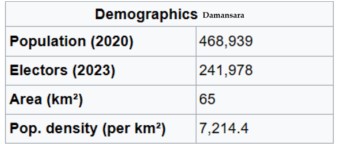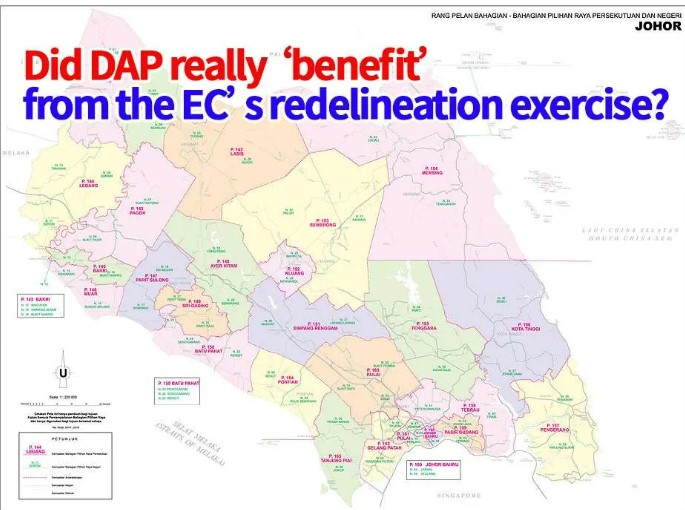RE-DELINEATION and gerrymandering were much talked about when Pakatan Harapan (PH) was in the Opposition but one wonders why after forming the Federal government, there are no efforts to get things right.
To provide some background to the uninitiated, re-delineation (according to TindakMalaysia) is “a constitutional process in delimiting electoral boundaries to ensure electors (voters during elections) receive fair representation of their voting preferences.”
Sensing the potential re-delineation exercise that could have taken place in 2011 (for Peninsular Malaysia), volunteers of Tindak Malaysia, a non-governmental organisation (NGO) founded in 2008, spent time and resources to learn up re-delineation, worked on proposals for alternative fair electoral boundaries and some without any knowledge even attended re-delineation objector training.
From the beginning, Tindak Malaysia realised that malapportionment was undermining fairness in the electoral process. This is the result of constitutional amendments of the past and poor voter education on the process.
“It is the outright manipulation of election boundaries (either of creation of seats or redrawing of existing seats) to give an upper hand for one political party over the others,” said its director Danesh Chacko. “Tindak is deepening and educating the public, politicians and the EC (Election Commission) on how to institute fair boundaries.”
Are you at a disadvantage?
Over 40 years, the Dewan Rakyat had nearly doubled in its number of seats from 144 (1965) to 222 in 2005. Thatfigure still stands today.
The reasons are plenty but largely, the civil society were never consulted. For that reason, the EC has been accused of not being fair in the way constituencies were being delimited. Some constituencies have apparently been carved out to provide the ruling party the advantage but this does not work in the interest of taxpayers.
Kepong with a population density of 8,849.9 per sq km which is four times of Putrajaya, for example, is only represented by one MP who has to attend to twice the number of voters compared to Putrajaya.
Assuming a re-delineation is done based on the number of voters among other factors, then the current Kepong constituency can have two separate constituencies. DAP which has a stronghold on Kepong voters would be more than happy to have two MPs in parliament.
But for taxpayers, it means each MP can focus on a smaller area with the same allocations provided by the government.

The reason why Kepong is only one constituency instead of two is one of the reasons why EC was once accused of gerrymandering and malapportionment.
Now, if Kepong has a population of 109,202 represented, what about Damansara which has 468,939 people? Its electors’ population is larger than Kepong by 2.5 times and Putrajaya by 5.6 times!
This is malapportionment because any candidate winning Damansara would have a tough time serving the electorate, especially since the population in Damansara is significantly higher.

The job is tough.
This is why both the EC and lawmakers – with the help of well-established independent teams of people who have done careful study of the constituencies – should start working on a fairer delimitation for each constituency.
According to Prof Wong Chin Huat of Sunway University, ordinary delimitation for West Malaysia cannot be done before March 2026 as the constitution stipulates an eight-year gap between the point the EC submits its report to the Prime Minister and the starting of another.
“Unless the Federal or state seats are increased (or reduced which never happens so far) to cause partial de-limitation in all states that are affected, cannot be expedited. However, such increase in Federal parliament will not be easily negotiated. East Malaysia alone has demanded 35% of seats which could easily push the total number beyond 300.”
Wong further opined that if the de-limitation were to start only after March 2026, it is quite unlikely that it can be adopted by the Parliament before its term ends on December 18, 2027 for it to be used for GE16.
“Like what PH and civil society groups did in 2016-2018 to challenge the process and recommendations, PN (Perikatan Nasional) would likely do the same,” he told FocusM. “PH supporters hoping to change the game in GE16 by way of de-limitation can largely forget it. Likewise, PN can stop fanning ethnic sentiment on constituency delimitation.”
Wong thinks that “a tweak of the electoral system to introduce party-list seats alongside the first-past-the-post (FPTP) seats” might be likelier than fixing the constituency boundaries before GE16 even though its chance is very slim.
While this electoral system tweaking needs an amendment to Articles 46 and 116 of the Federal Constitution, such colossal task has a chance to succeed because it may benefit most, if not all parties.
“The solution to Malaysian politics cannot be majoritarianism, namely, maximising one’s benefit when one has the power. A sizeable portion of PH supporters hope that constituency de-limitation can flip the game to their favour but would PN sit and allow that to happen? Viable changes need the buy-in from all parties.” Wong concluded. – Oct 8, 2023
Main pic credit: Liew Chin Tong’s blog (21 September 2016)









